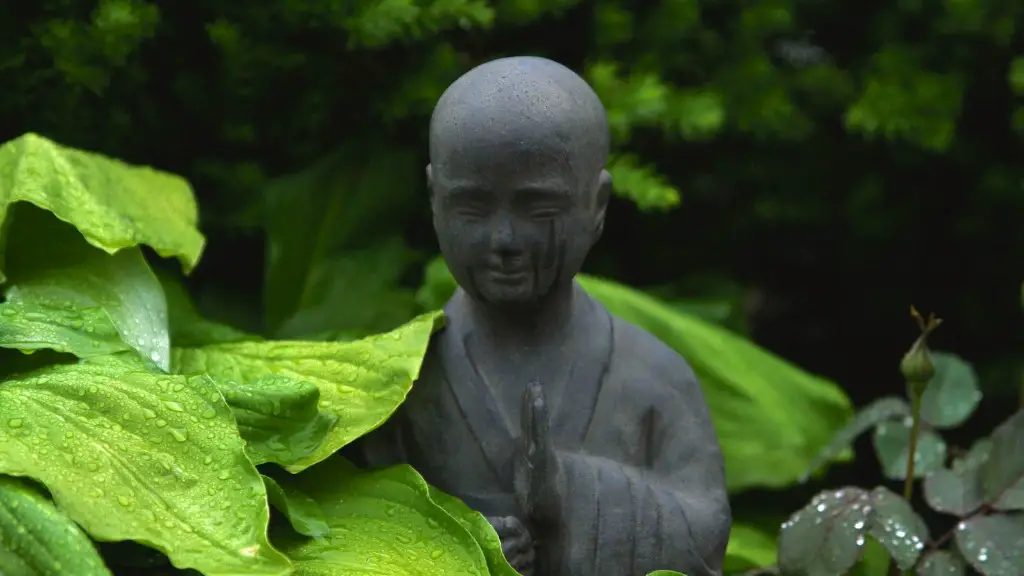In Buddhism, enlightenment (bodhi) is the understanding possessed by a Buddha of the nature of things. It is also regarded as the supreme goal of the Buddhist path.
The path to enlightenment is different for every person, but there are some key things that one can do to help them along the way. Meditation is one of the most important things a person can do to become enlightened. Buddhist teachings say that enlightenment comes from understanding the true nature of reality and achieving inner peace. This can be difficult to do on your own, which is why it is important to consult with a teacher or experienced practitioner. They can help you to develop the right techniques and attitude for your own journey. Additionally, it is important to read religious texts and learn as much as you can about the history and philosophy of Buddhism. By expanding your understanding of the religion, you will be better equipped to achieve enlightenment.
How do Buddhists reach enlightenment?
Buddhists believe that human life is full of suffering. In order to achieve enlightenment, or nirvana, they believe that meditation, spiritual and physical labor, and good behavior are the key.
The seven factors of the Noble Eightfold Path are often referred to as the seven factors of Awakening. They are:
1. Mindfulness (sati): This refers to the practice of maintaining awareness of the present moment, both internally and externally.
2. Keen investigation of the dhamma (dhammavicaya): This refers to the practice of investigating the true nature of things, both within oneself and in the world around us.
3. Energy (viriya): This refers to the practice of maintaining energy and enthusiasm in one’s practice, even in the face of difficulties.
4. Rapture or happiness (piti): This refers to the experience of joy and happiness that arises from our practice.
5. Calm (passaddhi): This refers to the experience of inner calm and peace that arises from our practice.
6. Concentration (samadhi): This refers to the practice of maintaining focus and concentration on our chosen object of meditation.
7. Equanimity (upekkha): This refers to the practice of maintaining an even-mindedness and balanced perspective in the face of the ups and downs of life.
Can anyone become enlightened in Buddhism
According to Buddhist tradition, any being can become enlightened as the Buddha did. In the Theravada tradition, enlightened beings other than the Buddha are known as arhats, or worthy ones. In Mahayana Buddhism, all beings are already inherently enlightened but have yet to realize it.
The English term enlightenment is the Western translation of various Buddhist terms, most notably bodhi and vimutti. The abstract noun bodhi (/ˈboʊdi/; Sanskrit: बोधि; Pali: bodhi), means the knowledge or wisdom, or awakened intellect, of a Buddha.
What are the 8 steps to enlightenment?
The Buddha’s Noble Eightfold Path is a practical guide to living a meaningful and ethical life. It can be divided into three main sections: wisdom, ethics, and mental discipline.
Wisdom is understanding the true nature of reality, including the nature of suffering and the way to end it. Ethics is living in a way that causes the least possible harm to others and promotes their well-being. Mental discipline is training the mind to be calm and focused.
The Noble Eightfold Path is not a static set of principles, but a dynamic process of transformation. It is a journey that leads to the ultimate goal of liberation from suffering.
It’s important to be able to hold emotional opposites at the same time because it helps us to see both sides of a situation and to find a middle ground. For example, when we are feeling angry, we can also feel love and compassion. This balance helps us to stay sane and to make better decisions.
How do I find my path to enlightenment?
The path to enlightenment in Buddhism is to be mindful of the present moment and to let go of the past and future. This is the most direct way to see the absolute truth and to be free from the conditioned reality of the world.
Nirvana is a term used to describe the highest state of consciousness and enlightenment that a person can achieve. There are two types of nirvana: nirvana-in-life and nirvana-after-death.
Nirvana-in-life is the state of complete release from desire and suffering that a monk who has attained enlightenment can achieve. This type of nirvana is still characterised by having a physical body, name and life.
Nirvana-after-death, also known as nirvana-without-substrate, is the complete cessation of everything, including consciousness and rebirth. This is the highest state of enlightenment that a person can achieve.
How long does it take to reach nirvana
Nirvana is a state of perfect peace and bliss. It is the goal of Buddhism and the ultimate destination of the Buddhist path. Nirvana is not a heaven or afterlife; it is a state of complete and perfect freedom from suffering.
The precepts are guidelines for living a moral and upright life. They are based on the belief that all living beings are equal and should be treated with compassion and respect. The precepts are meant to develop mind and character, and help progress on the path to enlightenment.
Are there unforgivable sins in Buddhism?
These are the five sins against Buddhism:
1. Killing one’s mother
2. Killing one’s father
3. Killing an arhat (saint)
4. Injuring the body of a buddha
5. Causing a division in the Buddhist community
The four stages of awakening in Early Buddhism and Theravada are four progressive stages culminating in full awakening (Bodhi) as an Arahant These four stages are Sotāpanna (stream-enterer), Sakadāgāmi (once-returner), Anāgāmi (non-returner), and Arahant.
Sotāpanna is the first stage of awakening and is defined as a person who has realized the impermanence of all things and has abandoned attachment to them. Sakadāgāmi is the second stage of awakening and is defined as a person who has abandoned attachment to their own ego and has realized the interconnectedness of all things. Anāgāmi is the third stage of awakening and is defined as a person who has abandoned all desire and is free from the cycle of rebirth. Arahant is the fourth and final stage of awakening and is defined as a person who has attained full awakening and is free from all suffering.
How does a person reach enlightenment
There is evidence that meditation can lead to “enlightenment,” a state in which one permanently experiences calm, restful alertness. Meditators who claim to have achieved enlightenment have distinct patterns of brain activity while awake and asleep, studies show.
There is no one answer to how long it takes to achieve continuous enlightenment through meditation. Some people may find that they achieve a sense of transcendence after just a few years of practice, while others may require more time. According to some studies, it may take anywhere from seven to 30 years to reach a state of continuous enlightenment. However, it is important to keep in mind that everyone’s journey is unique and there is no set timeframe for achieving enlightenment.
What are the steps to enlightenment?
The 7 stages of meditation are part of the path to enlightenment in Buddhist tradition. They are: 1) awareness of your body, feelings, and thoughts, 2) awareness of your mental state, 3) energy, 4) rapture, 5) pure bliss, 6) superconsciousness, and 7) upeksha (enlightenment). Through these stages, practitioners can develop a deeper understanding of the mind and achieve a state of inner peace and tranquility.
Nirvana is not a destination that can be reached by accumulating good karma or by following certain rules. It is a state of complete freedom from the cycle of birth and death. In order to achieve Nirvana, one must let go of all attachments and desires. This can only be done by rejecting the ego.
The ego is the false sense of self that we identify with. It is the cause of all suffering because it is based on the false belief that we are separate from others and that we need to compete in order to survive. This conditioned way of thinking keeps us trapped in a cycle of birth and death.
When we let go of the ego, we realize that we are all connected. We see that there is nothing to fear or compete for because we are all part of the same whole. This understanding leads to compassion and love for all beings.
The path to Nirvana is not easy. It requires a complete shift in our way of thinking. But it is possible. And it is the only way to truly end suffering.
Final Words
In Buddhism, enlightenment (bodhi) is the ultimate goal. It is the perfect, supreme state of wisdom and compassion. To become enlightened, one must follow the path of the Buddha and achieve nirvana.
It is said that there are three ways to become enlightened in Buddhism: study, practice, and meditation. To truly become enlightened, one must dedicate themselves to all three of these things. Through study, we learn about the teachings of the Buddha and what it means to live a life of Dharma. In practice, we put those teachings into action in our own lives. And in meditation, we allow ourselves to be open to the possibility of enlightenment and connect with our own Buddha nature.





